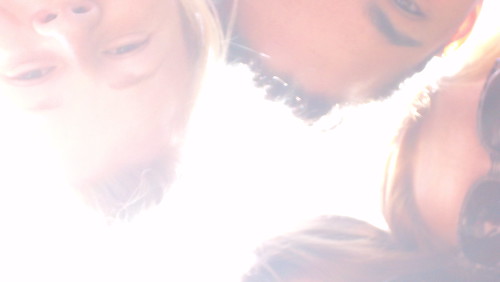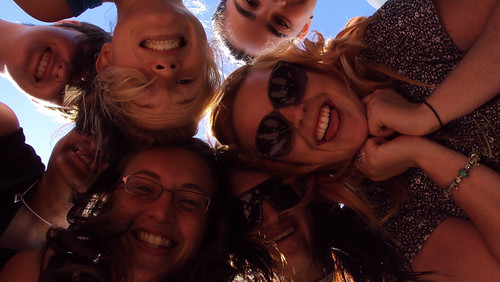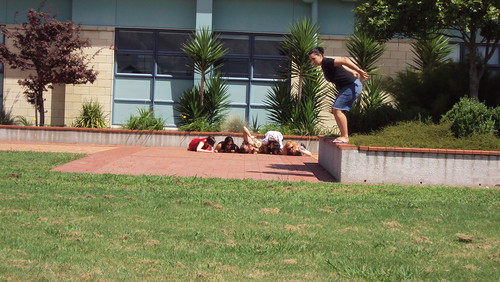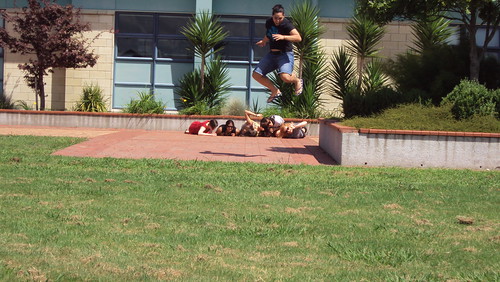I have chosen to focus my interest drawn from field work around schizophrenia - a mental illness. The focus of this post is around online communities available that relate to this topic.
The three online communities I have chosen are as follows:
http://www.eppic.org.au -
for information on different types of psychosis-spectrum disorders, phases of assessment, treatment, and recoverywww.mentalhelp.net/poc/center_index.php?id=7 -
The Mental Help Net website exists to promote mental health and wellness education and advocacy. It includes comprehensive information on schizophrenia and related disorders.http://www.schizophrenia.com/discussions.htm -
This website is more of a forum styled community where people with schizophrenia, and those without can gain information on their illness.(Mental Health Foundation New Zealand, 2011).
The first website focuses on adolescent mental health and early intervention. There are webinars (web seminars) that members of the website can watch and attend. There is also a forum for people to add to. There are links to contact the company and if someone is in need of help now they are able to tell you where to seek this help. The information on this website is primarly one way and informational, however there is reason to add and contribute to discussions. It provides sound links to outside agencies and articles around psychosis. An excerpt of the information discussed is as follows:
Substance Use
Because the age of onset for most people with a psychosis is in the late adolescent early adulthood years, all types of substance use needs to be assessed and addressed. Substance use is a problem for a young person if they experience frequent cycles of intoxication, withdrawal, and craving, leading to relapse into further intoxication.
Steps to assess for substance use: what to discuss with the client
•Quantify substance use
•Patterns of use
•Diagnostic criteria for dependence or abuse
•Impact of use: social, vocational, physical, financial, psychological
•Risk of injury (impulse control problems, reckless behaviour, careless accidents, driving, using machinery, appetite changes)
•Method of use
•Safety of method of use
•Withdrawal symptoms
•Cravings
•Family history of substance use
•Polysubstance
Assessment Tips
•Be conversant with the lingo. When in doubt ask!
•Normalise drug use (expect that the client uses substances)
•Avoid judgemental overtones
•Look out for yea-saying, gain-saying and acquiescence
•Look for physical signs of substance use
(Orygen Youth Health, n.d)
-------------------------------------------------------------------------------------
The second website focuses on latest news, videos, blogs, weblogs, links, book reviews and questions and answers regarding schizophrenia. It is a fairly interactive website but the layout could be more professional. Members are encouraged to give their opinion and share their stories when they like. I would assume this is a good website, both informative and interactive.
This website has links to other blogs and I have taken an excerpt from one:.....
Amber's brother, Josh, was diagnosed with schizophrenia in 2006. Amber feels that those who are affected by schizophrenia or another mental disorder should be commended for their bravery, not judged. The blog (which includes a link to her art exhibit created titled Gaining Insight: An Examination of the Relationship between Schizophrenia and Stigma) is a place where Amber shares her thoughts and feelings about her brother's struggles, as well as updates on her own life and how she wants to work to educate others about mental illness.
"Monday, February 14, 2011
MENTAL HEALTH AND PRISON:
TWO SYSTEMS WITH SO MANY CRACKS
After reading a few insightful articles (posted by fellow advocate-Bob) I had this nagging feeling to delve into a very complex topic: the rise of mentally ill inmates in prison. In fact, this statistic has quadrupled in the past 6 years alone. Some chilling facts:
• 70% of jail inmates with mental illness are there for NONVIOLENT offenses.
• More than 16% of jail inmates have mental illness (at the end of 2000, nearly 1 million individuals with mental illness were in the criminal justice system).
To learn more about the facts above, check out this link. What's even more shocking is how many inmates are not receiving proper treatment for the severe mental disorders such as schizophrenia, bipolar disorder, and major depression. I will use an empathetic example to put this into perspective. Imagine a loved one who has or had a very serious illness (of any kind). Now imagine if your loved one was forced into a cell with no chance of treatment. This would further intensify the illness and at times lead to death."
(Gaining Insight, 2011)
-------------------------------------------------------------------------------------
The final website focuses on a place where those with the same illness can come and discuss on old and new forums. There are thousands of threads on this website and cover areas such as Schizophrenia News, medications, social treatments, humour area, poetry, work and school related discussions, parent and cargiver discussions to name a few. Each person on the forum has a photo (if they choose) so anonymity isn't exactly covered. The discussions are very interesting once you get reading. One girl asks "Do you ever feel like everyone is plotting against you?" - - many many many replies on people agreeing and how they cope with this feeling. The sad thing about this website is that people are discussing different ways to kill themselves which is never ever a positive thing you want to see on a support community website. I would post an excerpt of that but it is slightly inappropriate for this, it still hurts me though. Such a hard world we live in.
One patron says - "The government sometimes bugs phones and installs spy cameras in peoples houses. They also sometimes engage in mind control. Currently they are working through the Department of Work and Pensions to make mentally ill people commit suicide through harassing and stalking them. I would be careful if I were you." (Leon, 2011).
The delusions around the government bugging phones and installing spy cameras in peoples houses can be viewed on a few posts on the website by the same person. Schizophrenia.
-------------------------------------------------------------------------------------
It brings forth the question. What is a 'community'? An online community at that.
Wikipedia describes online communities as
"An online community is a virtual community that exists online whose members enable its existence through taking part in membership ritual." Wikipedia (2011).
What is it that this community is seeking? Is it a sense of belonging perhaps? These support groups are not necessarily support groups and this can be seen in the content available online.
Which brings me to my next point. Is this information ethical?
David Weisbrot, president of the Australia Law Reform Commission, which has been investigating online privacy, comments, “Laws designed to protect privacy in the outside world struggle to cope with the issues raised by online communities. For example, online publication of photo-graphs, which may be sensitive and revealing, raises new challenges in relation to consent....when we interact with others online, we have no real way of knowing whether they are white or black, male or female, fat or thin, young or old. Will this disembodied quality of the online world lead to greater fairness, or will we lose the ability to engage concretely with others, and therefore truly overcome differences?" (Markkula Center for Applied Ethics, 2010, p.1)
-------------------------------------------------------------------------------------
So, what benefits do these types of communities have for tradition society?
While being largely informational there is also the benefit of reflecting real life communities, but through the internet. Sometimes it is easier for an individual to discuss information through the computer, rather than discussing it face to face in a group, especially with the stigma attached to mental health. The internet has grown so much that these types of communities can help to provide connections over distances instantly and to be able to connect with people with the same views or concerns is beneficial. These support communities are at no cost to the individual(Sunderland, 2011).
But what do these communities lack?
The use of these communities depends on those who have access and those that do may misuse it or have a delusional reliance on it. This is particularly important to note for those with mental health issues as they can often feed on these sources as a form of solid information, especially within the forum websites, which in turn questions the validity of the information shared.
"Although not generally as connective as real world communities and relationships, online communities have a great deal to offer. They can, if used constructively, provide information, support, entertainment and identity as a supplement to our everyday lives." (Sunderland, 2011)
-------------------------------------------------------------------------------------
Reference List:
Gaining Insight. (2011).
Mental health and prison: two systems with so many cracks. Retrieved 20 April from: http://gaining-insight.blogspot.com/.
Leon (2011). Thread reply. Retrieved on 20 April from: http://www.schizophrenia.com:8080/jiveforums/thread.jspa?threadID=44209&tstart=75.
Markkula Center for Applied Ethics. (2010). Retrieved on 20 April from: http://www.scu.edu/ethics/publications/submitted/social-networking.html.
Mental health foundation of New Zealand (2011). Support communities. Retrieved on 20 April from: http://www.mentalhealth.org.nz/resourcefinder/listings/resource/73/support-groups/.
Orygen Youth Health. (2011).
Early psychosis prevention and intevention centre. Retrieved on 20 April from: http://www.eppic.org.au/.
Sunderland (2011).
Benefits.. Retrieved on 21 April from: http://moodle.op.ac.nz/mod/resource/view.php?r=45796&frameset=ims&page=3.
Sunderland (2011).
Conclusion.. Retrieved on 21 April from: http://moodle.op.ac.nz/mod/resource/view.php?r=45796&frameset=ims&page=3
Wikipedia (2011). O
nline community. Retrieved on 21 April from: http://en.wikipedia.org/wiki/Online_community.










